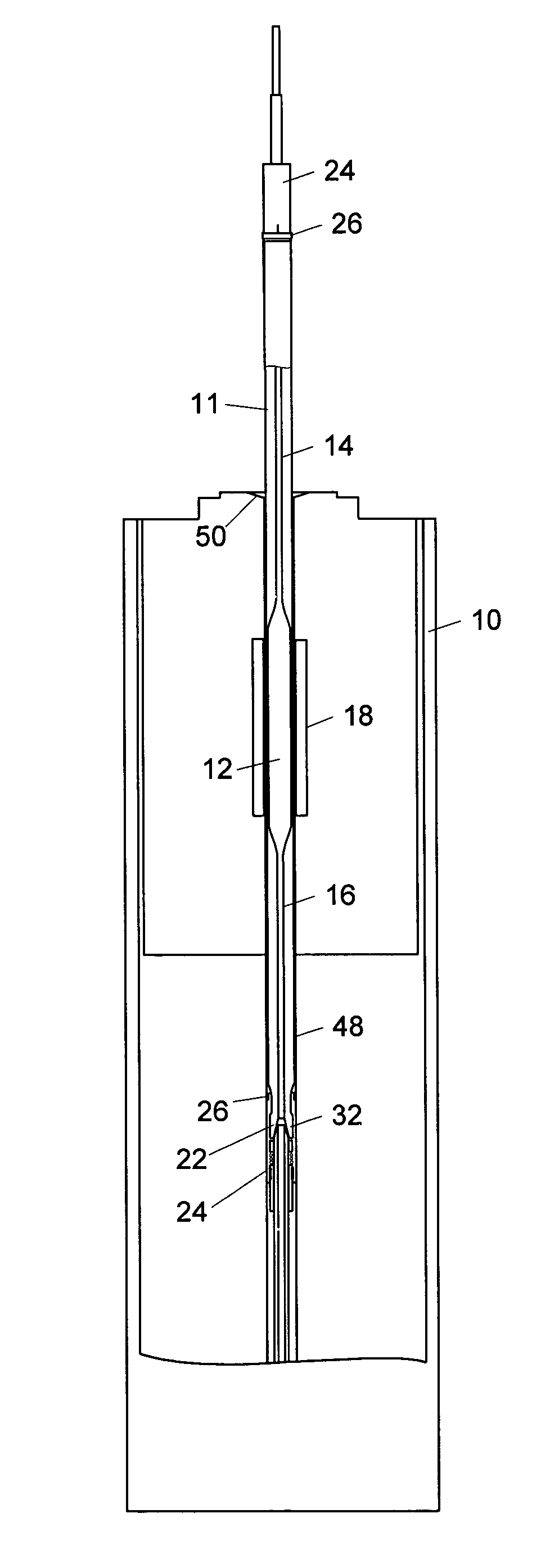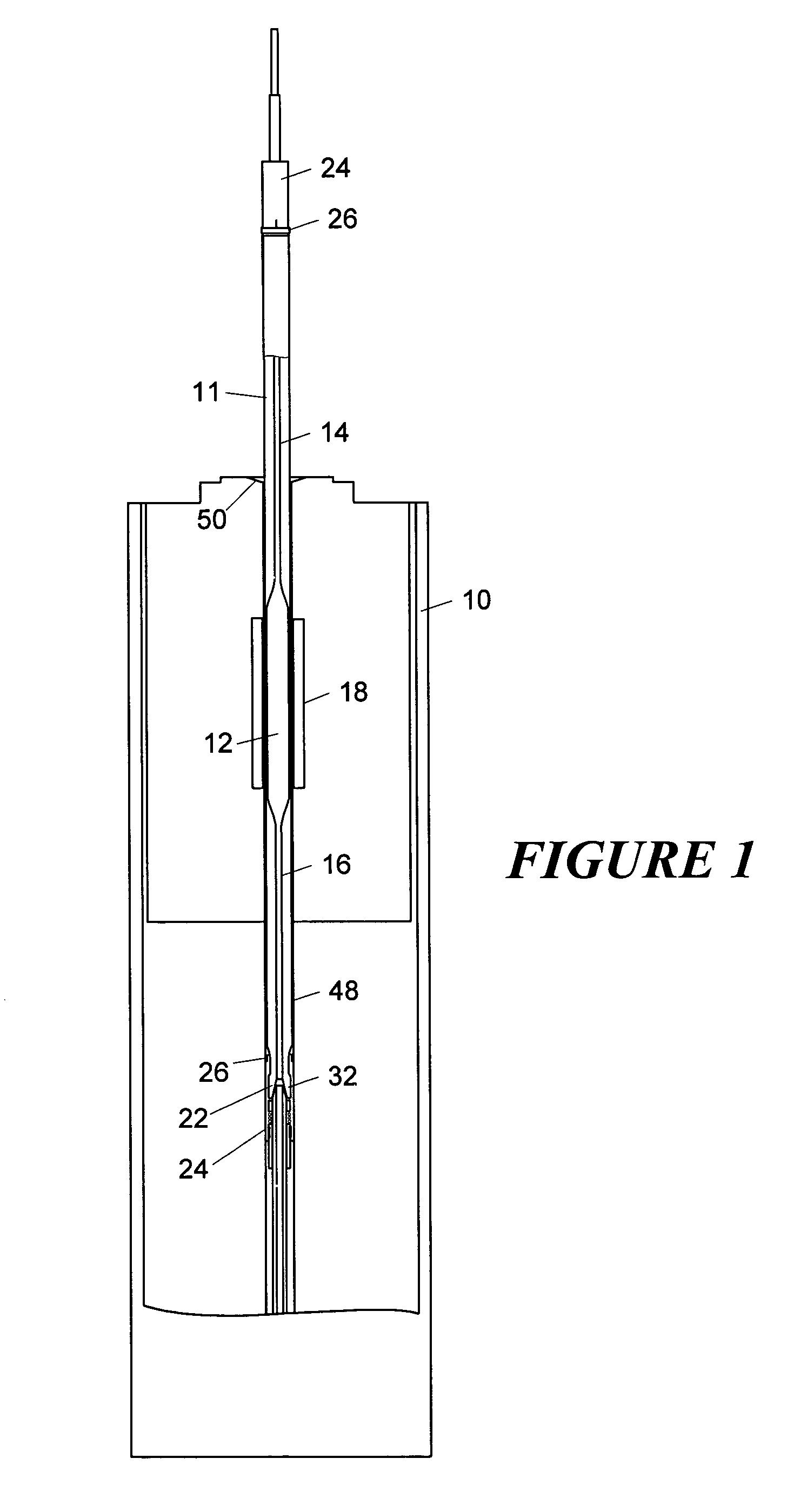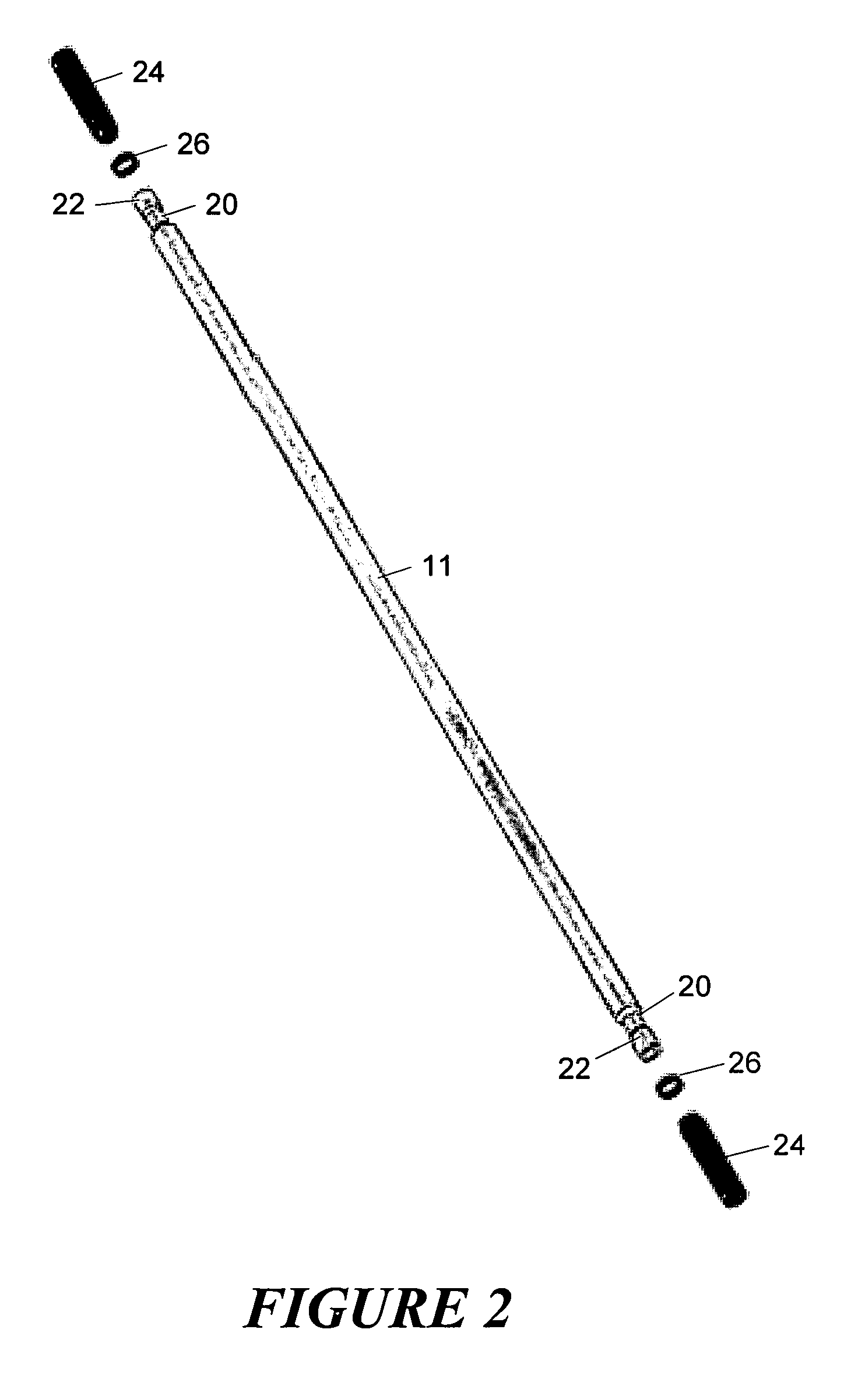NMR spectrometer with flowthrough sample container
a flow-through sample container and spectrometer technology, applied in the field of nmr spectroscopy, can solve the problems of high labor and time consumption, fragile sample cells, and expensive replacement, and achieve the effect of easy flushing of the probe channel
- Summary
- Abstract
- Description
- Claims
- Application Information
AI Technical Summary
Benefits of technology
Problems solved by technology
Method used
Image
Examples
Embodiment Construction
[0026]Shown in FIG. 1 is a portion of an NMR probe 10 according to the present invention, with a cutaway region showing a flow cell apparatus inside. The sample chamber 12 of the flow cell 11 comprises a cylindrical glass tube with an inner diameter that is tapered at either end of the sample chamber. The tapered ends of the sample chamber 12 reduce the diameter of the fluid space at either end of the sample tube to a capillary tube dimension, and these narrow pathways 14, 16 allow fluid flow into and out of the sample chamber 12. An outer shape of the flow cell is cylindrical, extending above and below the sample chamber 12. Within the probe 10, located very closely around the outside of the flow cell, is an RF coil 18 that provides the NMR RF pulse for inducing an NMR response from a sample fluid within the sample chamber. As shown, the thin wall of the sample chamber allows the RF coil to be in close proximity to the sample fluid, thereby maintaining a very large filling factor, ...
PUM
 Login to View More
Login to View More Abstract
Description
Claims
Application Information
 Login to View More
Login to View More - R&D
- Intellectual Property
- Life Sciences
- Materials
- Tech Scout
- Unparalleled Data Quality
- Higher Quality Content
- 60% Fewer Hallucinations
Browse by: Latest US Patents, China's latest patents, Technical Efficacy Thesaurus, Application Domain, Technology Topic, Popular Technical Reports.
© 2025 PatSnap. All rights reserved.Legal|Privacy policy|Modern Slavery Act Transparency Statement|Sitemap|About US| Contact US: help@patsnap.com



